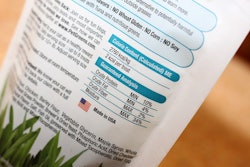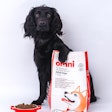
For pet food and its close sibling, human food, “clean label” has seemingly morphed, in just a few years, from fad to trend to all-encompassing consumer demand for full ingredient and product transparency. Though not clearly defined, understood or regulated, it’s here to stay, at least for a while.
Several pet food experts name clean labels and transparency in Lindsay Beaton’s annual trends outlook — no surprise considering the many times and ways they show up on human food trends lists. For example, Mintel placed “Full disclosure: consumers demand total transparency” at the top of its list, tying it to widespread consumer distrust stemming from the political and cultural climate in the US and other countries. (See https://goo.gl/hF2WHH.)
Atop its list, Innova Market Insights expanded clean label to “mindful choices.” Consumers now have a more holistic idea of what they want from food products: a healthy body plus peace of mind in terms of sustainability, environmental responsibility and ethical products, said LuAnn Williams, director of innovation. About 40 percent of US and UK consumers have increased consumption of what they consider healthy foods, she added, while global food product launches with ethical claims – animal welfare, humane raising, environmentally responsible and sustainable packaging – rose 44 percent annually from 2010 to 2016, despite any scientific or regulatory backing.
Similarly, the Kerry Health and Nutrition Institute conducted a study of 2,000 consumers in the US, UK, Germany and France, finding that 73 percent read the ingredients list and 66 percent read the nutrition panel. Also, 94 percent said they would be loyal to product manufacturers that adopt “complete transparency,” while 99 percent said they would pay more for transparent products.
None of those terms were defined. And short ingredient lists, considered a hallmark of clean label, can have unintended consequences, said Nathan Pratt, PhD, a Kerry RD&A scientist, leading consumers to choose products missing required or key nutrients. The unarticulated demand behind clean label – what consumers really want and need – is healthy food, he said. No doubt that applies to their pets’ food, too.



















